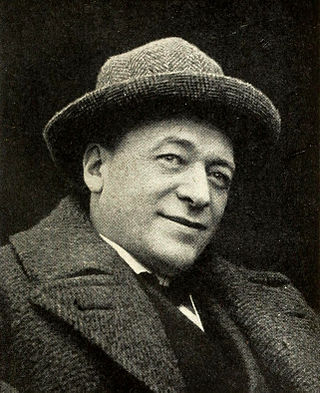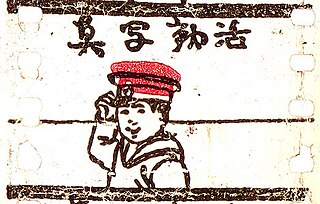Related Research Articles

Animation is a filmmaking technique whereby still images are manipulated to create moving images. In traditional animation, images are drawn or painted by hand on transparent celluloid sheets (cels) to be photographed and exhibited on film. Animation has been recognized as an artistic medium, specifically within the entertainment industry. Many animations are either traditional animations or computer animations made with computer-generated imagery (CGI). Stop motion animation, in particular claymation, has continued to exist alongside these other forms.

Morphing is a special effect in motion pictures and animations that changes one image or shape into another through a seamless transition. Traditionally such a depiction would be achieved through dissolving techniques on film. Since the early 1990s, this has been replaced by computer software to create more realistic transitions. A similar method is applied to audio recordings, for example, by changing voices or vocal lines.

Émile Eugène Jean Louis Cohl was a French caricaturist of the Incoherent Movement, cartoonist, and animator, called "The Father of the Animated Cartoon".

Scientific visualization is an interdisciplinary branch of science concerned with the visualization of scientific phenomena. It is also considered a subset of computer graphics, a branch of computer science. The purpose of scientific visualization is to graphically illustrate scientific data to enable scientists to understand, illustrate, and glean insight from their data. Research into how people read and misread various types of visualizations is helping to determine what types and features of visualizations are most understandable and effective in conveying information.

Visualization, also known as Graphics Visualization, is any technique for creating images, diagrams, or animations to communicate a message. Visualization through visual imagery has been an effective way to communicate both abstract and concrete ideas since the dawn of humanity. from history include cave paintings, Egyptian hieroglyphs, Greek geometry, and Leonardo da Vinci's revolutionary methods of technical drawing for engineering purposes that actively involve scientific requirements.
Thomas Albert "Tom" DeFanti is an American computer graphics researcher and pioneer. His work has ranged from early computer animation, to scientific visualization, virtual reality, and grid computing. He is a distinguished professor of Computer Science at the University of Illinois at Chicago, and a research scientist at the California Institute for Telecommunications and Information Technology (Calit2).

3D computer graphics, sometimes called CGI, 3D-CGI or three-dimensional computer graphics, are graphics that use a three-dimensional representation of geometric data that is stored in the computer for the purposes of performing calculations and rendering digital images, usually 2D images but sometimes 3D images. The resulting images may be stored for viewing later or displayed in real time.

Computer graphics deals with generating images and art with the aid of computers. Computer graphics is a core technology in digital photography, film, video games, digital art, cell phone and computer displays, and many specialized applications. A great deal of specialized hardware and software has been developed, with the displays of most devices being driven by computer graphics hardware. It is a vast and recently developed area of computer science. The phrase was coined in 1960 by computer graphics researchers Verne Hudson and William Fetter of Boeing. It is often abbreviated as CG, or typically in the context of film as computer generated imagery (CGI). The non-artistic aspects of computer graphics are the subject of computer science research.
The Indian Animation Industry encompasses traditional 2D animation, 3D animation and visual effects for feature films. In 1956, Disney Studios animator Clair Weeks, who had worked on Bambi, was invited to Films Division of India in Mumbai to establish and train the country's first animation studio as part of the American technical co-operation mission. He trained a core group of Indian animators, whose first production was a film called The Banyan Deer (1957). Veteran animator Ram Mohan started his career at Films Division's Cartoon Unit.

Katsudō Shashin, sometimes called the Matsumoto fragment, is a Japanese animated filmstrip from the Meiji era that is the oldest known work of animation from Japan. Its creator is unknown. Evidence suggests it was made somewhere between 1907 and 1912, so it may predate the earliest displays of Western animated films in Japan. It was discovered in a collection of films and projectors in Kyoto in 2005.
Fantasmagorie is a 1908 French animated short film by Émile Cohl. It is one of the earliest examples of traditional (hand-drawn) animation, and considered by film historians to be the first animated cartoon.
The history of computer animation began as early as the 1940s and 1950s, when people began to experiment with computer graphics – most notably by John Whitney. It was only by the early 1960s when digital computers had become widely established, that new avenues for innovative computer graphics blossomed. Initially, uses were mainly for scientific, engineering and other research purposes, but artistic experimentation began to make its appearance by the mid-1960s – most notably by Dr. Thomas Calvert. By the mid-1970s, many such efforts were beginning to enter into public media. Much computer graphics at this time involved 2-D imagery, though increasingly as computer power improved, efforts to achieve 3-D realism became the emphasis. By the late 1980s, photo-realistic 3-D was beginning to appear in film movies, and by mid-1990s had developed to the point where 3-D animation could be used for entire feature film production.
George R. Tweedie (1857–1937) was a businessman who gained fame in 1891 by running a popular magic lantern show, titled "Gossip about Ghosts". The show, which cost sixpence, consisted of fifty slides, each illustrating a story about ghosts or supernatural occurrences. One concerned George Villiers, 1st Duke of Buckingham, who supposedly appeared as a ghost to a king's officer to prevent the death of his son. Another touched upon the Legend of Hamilton Tighe, a murdered man who haunted his murderers in headless form.

Computer-generated imagery (CGI) is a specific-technology or application of computer graphics for creating or improving images in art, printed media, simulators, videos and video games. These images are either static or dynamic. CGI both refers to 2D computer graphics and 3D computer graphics with the purpose of designing characters, virtual worlds, or scenes and special effects. The application of CGI for creating/improving animations is called computer animation, or CGI animation.
Events in 1937 in animation.
Events in 1891 in animation.
Events in 1869 in animation.
Events in 1860 in animation.
Events in 1855 in animation.
References
- ↑ The Magic Lantern Society. Encyclopedia of the Magic Lantern. pp. 21–22
- ↑ The Mirror of Literature, Amusement, And Instruction. 1842. p. 98.
- ↑ Michael Friendly (2008). "Milestones in the history of thematic cartography, statistical graphics, and data visualization".
- ↑ Thomas G.West (February 1999). "Images and reversals: James Clerk Maxwell, working in wet clay". ACM SIGGRAPH Computer Graphics. 33 (1): 15–17. doi:10.1145/563666.563671. S2CID 13968486.
- ↑ "Émile Cohl". lambiek.net. Archived from the original on January 18, 2022. Retrieved January 20, 2021.
- ↑ Beckerman, Howard (1 September 2003). Animation: the whole story. Skyhorse Publishing Inc. p. 17. ISBN 978-1-58115-301-9 . Retrieved 16 August 2011.
- ↑ Litten, Frederick S. (6 July 2013). "On the earliest (foreign) animation films shown in Japanese cinemas" (PDF). Retrieved 12 September 2013.
- ↑ Donald Crafton; Emile Cohl, Caricature, and Film; Princeton Press; ISBN 0-691-05581-5 (1990)
- ↑ "The American Woods". codex99.com. Retrieved 18 September 2024.
- ↑ US Pat. 335703 Patent application for "Wooden card for business and other purposes". February 9, 1886.
- ↑ "Gossip about ghosts". Slide Readings Library. The Magic Lantern Society. Archived from the original on 28 July 2011. Retrieved 26 February 2011.
- ↑ Page 35, Paranormal Media: Audiences, Spirits and Magic in Popular Culture, Author: Annette Hill, Publisher: Routledge, 2010, ISBN 9781136863189, ...One public lecture titled 'Gossip about Ghost' by former chemist George Tweedie claimed 'spook hunting has recently become as fashionable as Slumming'...
- ↑ Page 220, The Chemical News and Journal of Industrial Science; with which is Incorporated the "Chemical Gazette.": A Journal of Practical Chemistry in All Its Applications to Pharmacy, Arts and Manufactures, Volume 37, Contributor: William Crookes, Publisher:Chemical news office, 1878, ...A process for coating iron with magnetic oxide by the action of heated air. By George R. Tweedie...